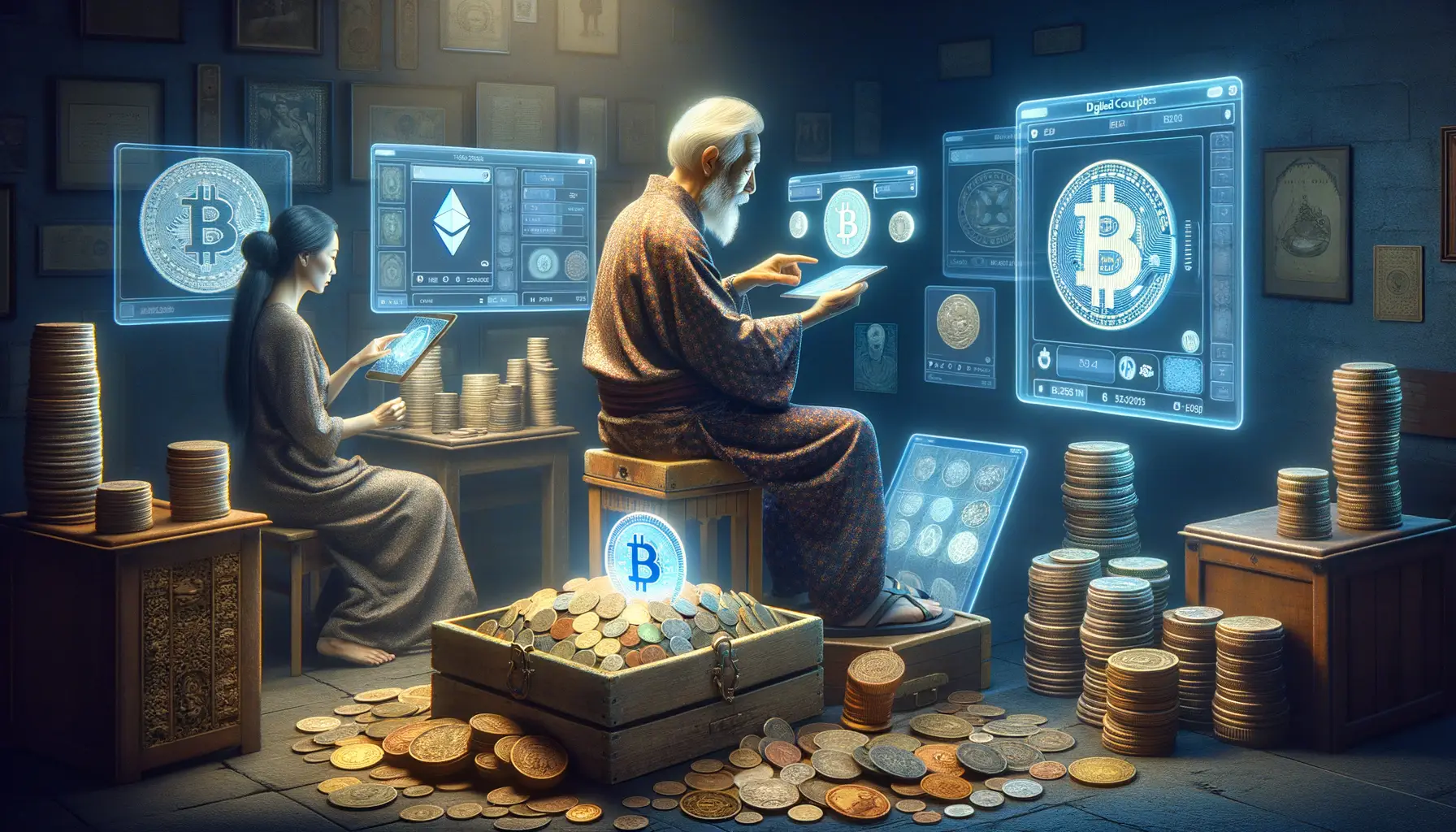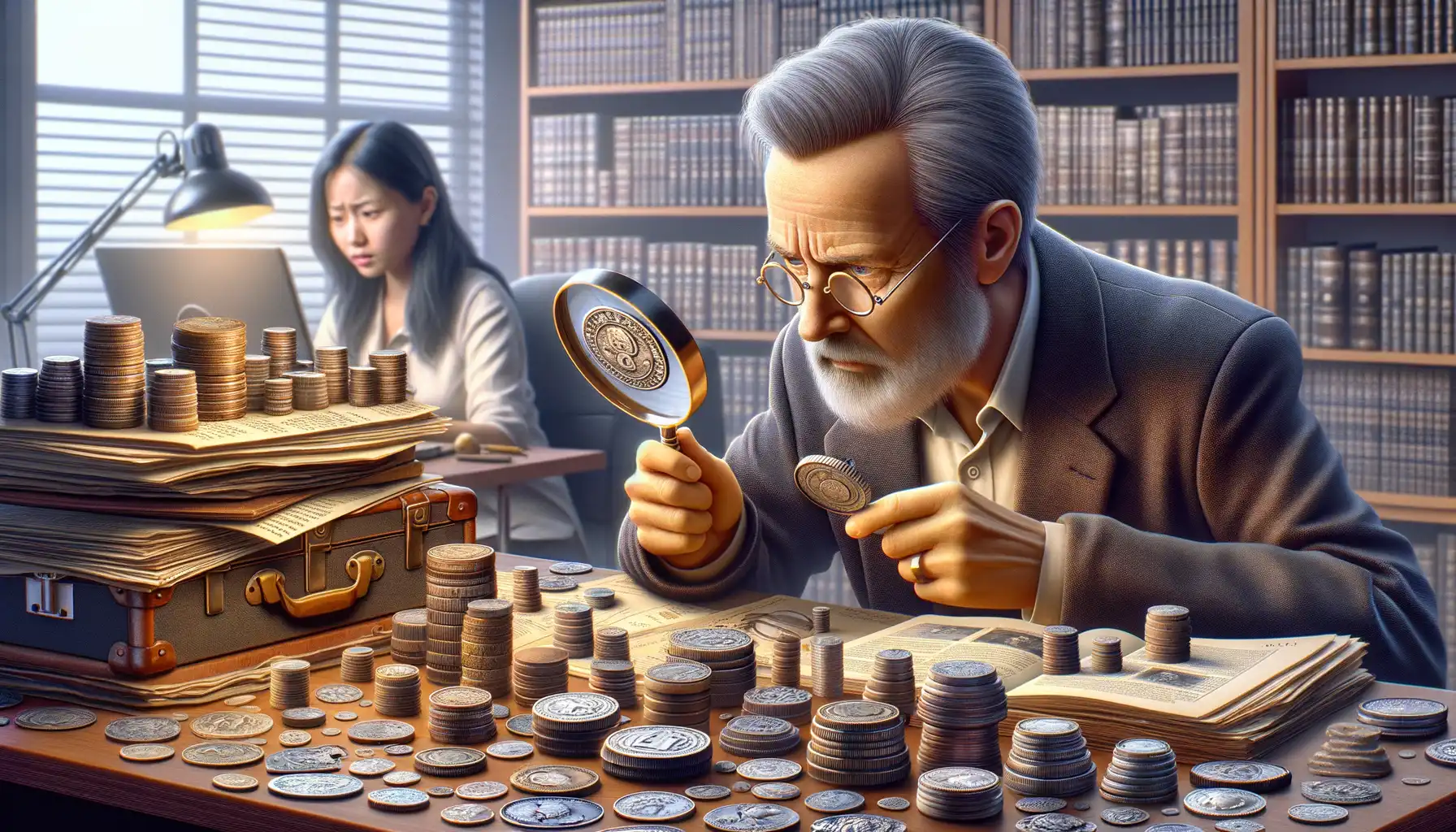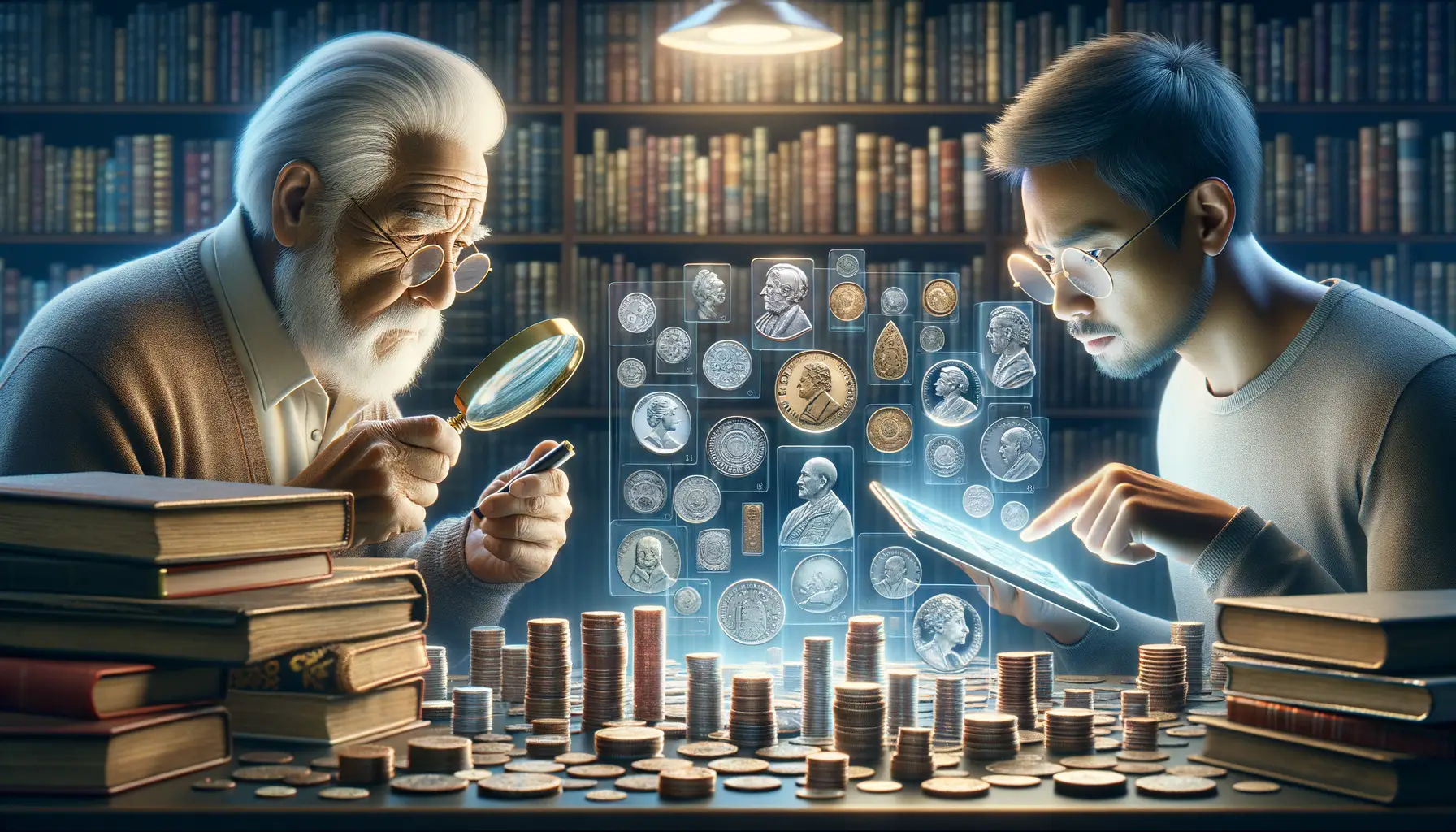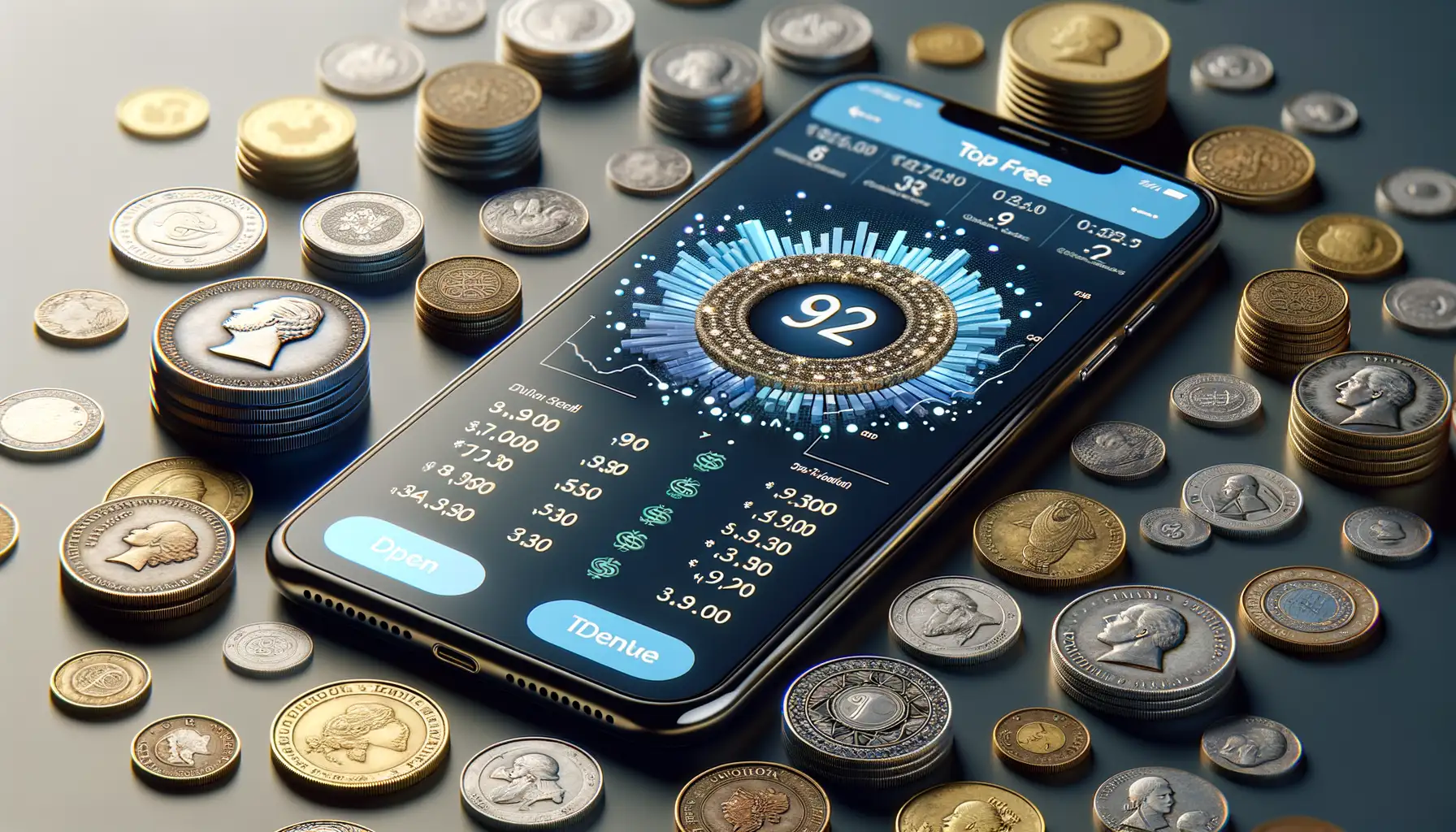Introduction to Digital Currencies and Coin Collecting
Imagine holding a piece of history in your hand—a shiny coin, rich with the stories of emperors, revolutions, or ancient trade routes. Now, contrast that with the intangible world of digital currencies: Bitcoin, Ethereum, and NFTs flying through cyberspace, invisible yet powerful. It’s fascinating how these two worlds seem miles apart, yet they’re converging in ways we couldn’t have predicted.
How Coins and Crypto Stir Different Emotions
For traditional coin collectors, every piece is a treasure chest of memories. A 1921 Morgan Silver Dollar doesn’t just sit in a folder—it sparks an avalanche of curiosity: Who held this? What was happening in their world? The tactile connection makes it personal.
Digital currencies, on the other hand, bring an entirely new kind of rush. There’s no physical heft, but owning a fraction of Bitcoin feels like you’ve joined an elite club of tech-savvy pioneers. These assets also tell their own stories: the rise and fall of markets, the technological innovations driving them forward.
- Coins: rich in history, craftsmanship, and scarcity.
- Digital currencies: volatile yet boundary-breaking, with infinite possibilities for the future.
Isn’t it extraordinary how both can coexist—one whispering tales of the past, the other propelling us into the future?
How Digital Currencies Are Changing Numismatic Interests

Blurring the Line Between Tangible and Digital
The rise of digital currencies like Bitcoin and Ethereum hasn’t just disrupted traditional finance—it’s reshaping what numismatists, or coin collectors, value. Collecting coins has long been a tactile experience: feeling the weight of a Roman denarius or observing the intricate details of a rare mint mark. But today, the allure of physical currency is being challenged by digital “coins” that exist only as strings of blockchain data.
For instance, imagine owning a limited-edition NFT coin tied to an iconic crypto project. While it lacks the tangible heft of a silver dollar, it offers something equally compelling: exclusivity in the digital realm. Suddenly, the concept of rarity expands beyond metals to algorithms, metadata, and smart contracts.
- Crypto-themed collectibles, like Bitcoin commemorative coins, are now bridging the gap between the physical and digital worlds.
- Some collectors are venturing into blockchain-stored “crypto art,” which can mimic the prestige of owning a historical artifact.
This shift from touchable treasures to technicolor tokens is redefining what “numismatic value” really means. It’s not just about history anymore—it’s about novelty, community, and a futuristic edge.
The Community Factor: A New Kind of Collector
What’s also fascinating is how digital currencies have given birth to an entirely new breed of collectible enthusiasts. These aren’t your sweater-clad, magnifying glass-wielding skeptics—they’re tech-savvy, online communities buzzing with trades and debates over rare Satoshis or pixel-perfect NFTs.
Platforms like OpenSea and Rarible are becoming the 21st-century equivalents of dusty auction houses, except these marketplaces operate 24/7 and invite global participation. You’ll find people bidding on items like coded tokens that represent fractional ownership in historic real-world coins, blending both eras seamlessly.
Instead of gathering at small-town fairs, modern collectors connect globally, sharing memes and insights on Discord servers. It’s no longer just about coins themselves—it’s about the stories, utility, and culture surrounding them. This sense of belonging is attracting younger generations, ensuring numismatics continues to evolve, albeit with a very digital twist.
Challenges Faced by Traditional Coin Collectors

When Passion Meets Practical Obstacles
Traditional coin collectors face a unique set of challenges, often rooted in the sheer unpredictability of their passion. Imagine spending years hunting down a rare coin—scouring dusty antique shops or bidding anxiously at auctions—only to discover that counterfeits are flooding the market. Yes, the rise of digital technology has made it easier for fraudsters to create nearly flawless replicas, leaving hobbyists second-guessing the authenticity of their treasures.
Beyond that, the very act of preserving coins is a battle against time. Humidity, air pollution, and even the oils from your fingertips threaten to blemish or degrade these delicate pieces of history. Collectors must become part-curators, armed with special cases, gloves, and constant vigilance.
- Rising costs of rare coins: As demand grows, the price of coveted pieces can skyrocket, placing them out of reach for many enthusiasts.
- Lack of young enthusiasts: In a digital-first world, fewer people are drawn to the tactile charm of physical coin collecting.
These are not just minor speed bumps—they’re significant hurdles that test one’s devotion to the art of coin collecting. And yet, for those who persevere, the reward is unmatched: holding a tangible fragment of history in your hands.
Opportunities for Coin Collectors in the Digital Age

Rediscovering Treasure in the Modern World
The digital age has breathed new life into the world of coin collecting, opening doors that once seemed unimaginable. Imagine joining a virtual auction, where collectors from across the globe bid on the same rare coin as you, all in real-time. Or picture yourself scanning a coin with an app to instantly uncover its history, mint year, and even approximate value. Sounds like magic? It’s just technology meeting tradition!
One of the most remarkable aspects of this digital revolution is the endless sea of resources at your fingertips:
- Online marketplaces that host everything from ancient Roman coins to limited-edition minted pieces.
- Interactive forums where you can geek out over obscure details with fellow collectors.
- Mobile apps that let you catalog your collection effortlessly while comparing notes with others.
Blurring the Line Between Digital and Physical Collections
Have you heard of blockchain-certified coins? These futuristic collectibles combine the tactile joy of holding a physical coin with the irrefutable authenticity of blockchain verification. It’s like owning a piece of history stamped both by time and technology. Meanwhile, online learning platforms are offering expert-led workshops on preservation techniques, valuation tips, and more. This isn’t just evolution; it’s revolution, tailor-made for hungry collectors like you.
Conclusion: Finding a Balance Between Tradition and Innovation

Uniting the Old and the New
Traditional coin collecting feels like opening a dusty chest of family heirlooms — each piece whispers secrets from centuries past. But as digital currencies take center stage, we’re faced with an electrifying challenge: how do we honor this rich history without getting left behind in a world that’s hurtling toward innovation? It’s not about picking sides; it’s about making them dance together.
The rise of NFTs and blockchain technology doesn’t have to mean the death knell for tangible coins. In fact, new tools can enrich your passion. Imagine cataloging your collection with apps that record provenance or using virtual auctions where you connect with collectors across the globe. On the flip side, nothing replaces the thrill of holding a historic coin heavy with centuries of stories.
- Embrace technology as a bridge, not a barrier.
- Explore hybrid collections that mix physical coins with digital tokens commemorating iconic designs.
By blending these worlds, you ensure that the light of tradition shines on, while giving innovation its well-deserved spotlight. After all, why settle for “either-or” when you can have *both*?


